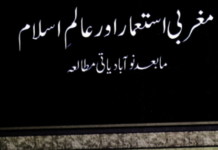The sultanate was founded on 3 August 1347 by governor Ala-ud-Din Hassan Bahman Shah, possibly of Tajik-Persian[3] descent, who revolted against the Sultan of Delhi, Muhammad bin Tughluq. Nazir uddin Ismail Shah who had revolted against the Delhi sultanate stepped down on that day in favour of Zafar Khan who ascended the throne with the title of Alauddin Bahman Shah. His revolt was successful, and he established an independent state on the Deccan within the Delhi Sultanate’s southern provinces. The Bahmani capital was Ahsanabad (Gulbarga) between 1347 and 1425 when it was moved to Muhammadabad (Bidar). The Bahmani contested the control of the Deccan with the Hindu Vijayanagara empire to the south. The sultanate reached the peak of its power during the vizierate (1466–1481) of Mahmud Gawan. After 1518 the sultanate broke up into five states: Ahmednagar, Berar, Bidar, Bijapur, and Golconda, known collectively as the Deccan sultanates.
Note: This article was originally published on our related blog. We have merged content from our educational subdomains to provide easier access in one place. The original post is still available at: http://www.books.urdutubes.com/2013/12/tareekh-e-manzoom-e-salateen-e-behmania.html
All content is owned and authored by us, and redistribution or reuse is not allowed without permission.
Note: This post is part of our content merger from multiple educational subdomains. To access the original content, visit: books.urdutubes.com for book-related content, PDFs, and downloads, or videos.urdutubes.com for video-related posts. All content is owned and authored by us, and redistribution or reuse is not allowed without permission.




![Khawateen Digest February 2025 [Download PDF] Khawateen Digest – February 2025 Edition: A Must-Read for Every Woman! The February 2025 issue of Khawateen Digest is packed with engaging stories, insightful articles, and practical tips that cater to the modern woman. From inspiring tales to expert beauty and health advice, this edition has it all. Whether you're in the mood for a gripping story or seeking helpful tips for daily life, this digest will keep you hooked. Don't miss out on the latest edition – download the Khawateen Digest February 2025 now and enjoy a well-rounded read that speaks to every woman's interests.](https://www.urdutubes.com/wp-content/uploads/2025/04/Khawateen-Digest-February-2025-Download-PDF-218x150.jpg)
![Khawateen Digest January 2025 [Download PDF] Khawateen Digest January 2025 [Download PDF]](https://www.urdutubes.com/wp-content/uploads/2025/04/Khawateen-Digest-January-2025-Download-PDF-218x150.jpeg)
![Kiran Digest April 2024 [Download PDF] Kiran Digest April 2024 [Download PDF]](https://www.urdutubes.com/wp-content/uploads/2025/04/Screenshot-2025-04-13-113317-218x150.png)
![Kiran Digest March 2024 [Download PDF]](https://www.urdutubes.com/wp-content/uploads/2018/05/KiranDigestMay2018255BDownloadFreePDF255D.jpg)








![Ubqari February 2007 [Download Ubqari Wazaif Read Online]](https://www.urdutubes.com/wp-content/uploads/2018/05/UbqariFebruary2018.jpg)
